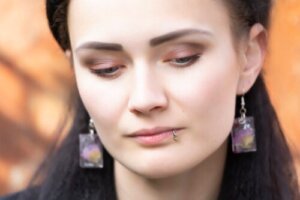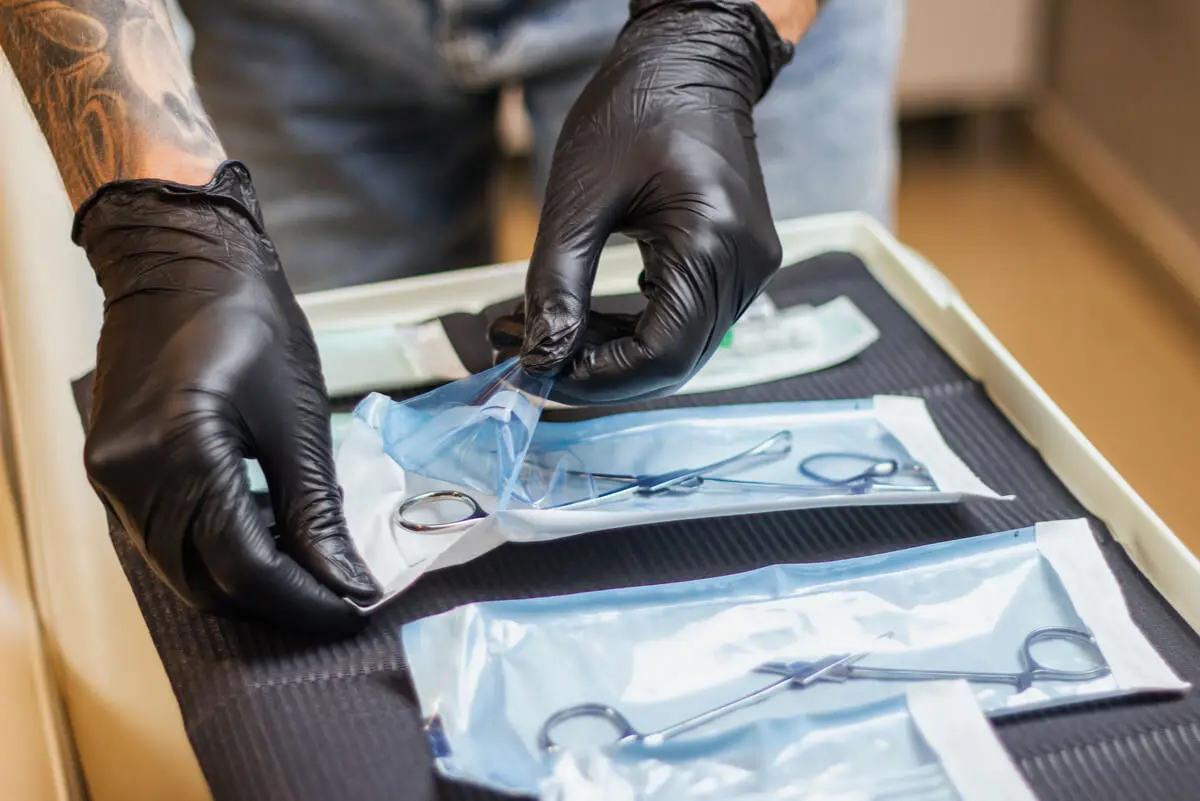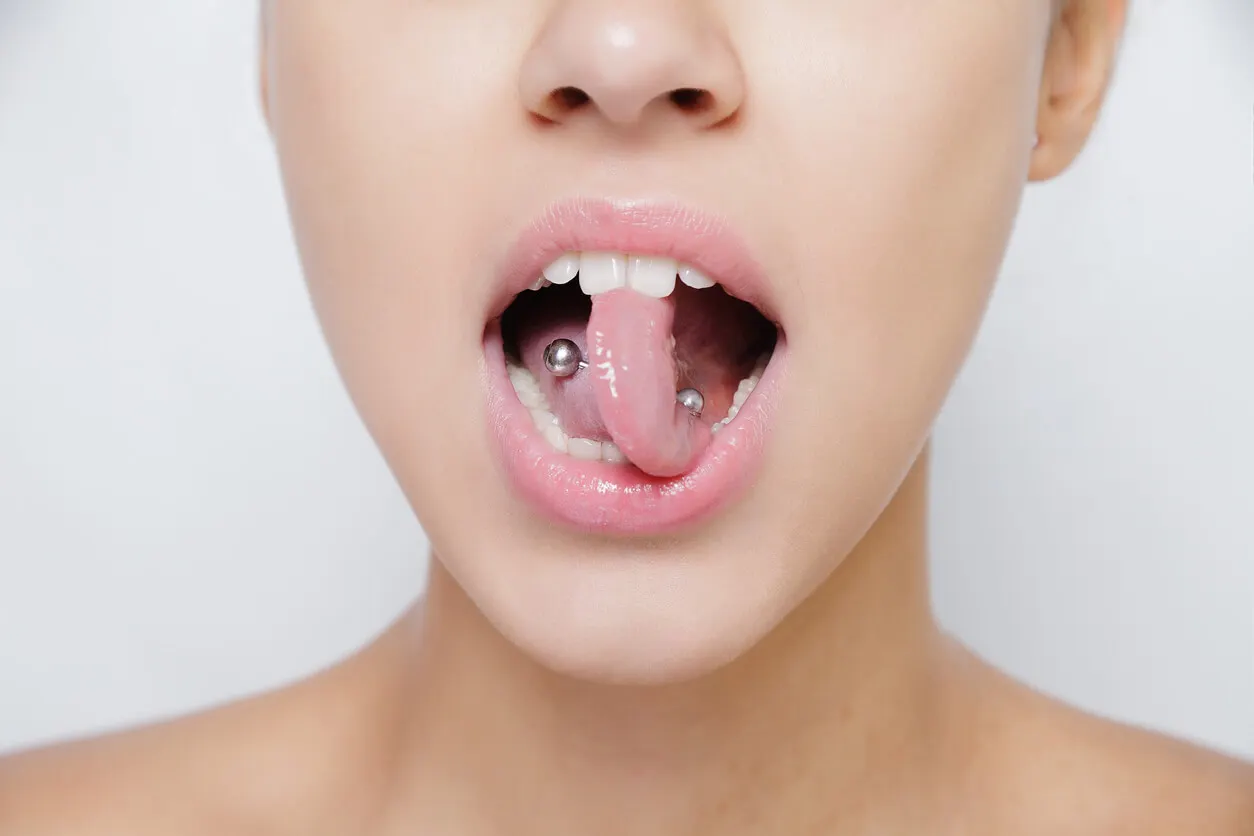I Have a Lump Around a Piercing: What Can I Do?


Written and verified by the doctor Mariel Mendoza
The presence of a lump around a piercing isn’t a cause for panic. Although they’re very frequent, annoying, and uncomfortable, these lumps occur as part of the natural healing process and usually heal themelves over time.
A lump around a piercing is caused by the scattered accumulation of scar tissue and occurs most commonly in the denser tissues, such as the cartilage of the nose or ear.
Although sometimes confused with a keloid or infection, the real origin is the presence of a hypertrophic scar that’s formed by trauma to the tissue after placement of the piercing. This is why jewelry care is essential.
Why does a lump occur around a piercing?
These hypertrophic scars on piercings have multiple factors associated with them and their cause is somewhat unknown. It’s assumed to be a reaction of the body.
This hypertrophic scar is caused by soft tissue trauma. The cartilage, skin, muscles, and fibrous area become inflamed. This leads to the overproduction of collagen. This new tissue builds up over the wound, forming the lump.
Is there any way to prevent it?
The lump around a piercing or hypertrophic scar can appear from hours after a piercing to weeks or years later. Because there was trauma (jewelry placement) before, it could be prevented by taking the utmost care of the area around the piercing.
The following care is recommended:
- Avoid touching the perforated area, especially with unwashed hands.
- Minimize the risk of shocks or other injuries in the area of the perforation.
- Don’t apply constant pressure.
- Evaluate the type of jewelry before inserting it. Allergies to the material may cause irritation and inflammation. Hypoallergenic jewelry (18 or 24 karat gold, stainless steel, or titanium) is recommended.
- Clean the piercing 2 to 3 times a day, preferably with a physiological solution or neutral soap.
- In case of an ear-piercing, try to wear your hair up when wearing piercings.

We think you may also enjoy reading this article: Mouth Piercing Could Have Oral Health Consequences
Treatment of hypertrophic scars
The best treatment for a lump around a piercing is patience. They usually disappear over time. However, they can last up to 6 months, which is enough time to make anyone uneasy!
As additional measures, when locating the lump you could remove the jewelry and use hydrogen peroxide or rubbing alcohol to clean it. Then apply some antiseptic gel or liquid and replace the earring in less than 15 minutes, because you don’t want the piercing to close.
It’s also recommended to place ice near the area for a maximum of 5 minutes. Once healed, you can change your jewelry for one that’s another material if you think there may be an allergic process.
You can also massage the area daily with oil and clean the area with saline solution or a neutral soap with an antibacterial effect. However, if the infection is suspected, the jewelry can’t be removed, as this may cause the wound to close quickly.
How to differentiate a lump around a piercing from an infection and a keloid
The classic lump around the piercing is neither an infection nor a keloid. It’s a hypertrophic scar.
Keloids are disproportionately large scars. They can appear spontaneously or secondary to trauma, but their main characteristic is that they always exceed the limits of the wound that originated them.
A true keloid usually appears between 3 to 12 months after the injury and continues to grow over time, unlike hypertrophic scars, in which growth stops.
On the other hand, hypertrophic scars are lumpy and hard but never go beyond the limits of the original wound. In this case, there are no signs of a previous infection.
When infection is present, the process produces some fever and redness in the area, swelling, pain on palpation, and warmth around the perforated area. Occasionally, yellow/green secretions with a foul odor may be present.
Treatment for the infection is with topical or oral antibiotics. In some cases, removal of the piercing and drainage of the pus is required. However, this should be decided by a physician, as removing the jewelry with an ongoing infection requires a careful environment for the intervention.
Keloids, on the other hand, are treated with infiltrated corticosteroids, laser, cryotherapy, or surgery. Of course, this also involves removing the jewelry.

Like this article? You may also like to read: A Guide to Industrial Piercing and Its Aftercare
When should I see a doctor?
Some symptoms that require immediate medical attention are as follows:
- Fever
- Discharge of yellow or greenish pus with a bad odor
- Pain that progressively increases in intensity and is more noticeable when rubbed
- Progressive redness with a tendency to darkening of the area (from red to purple)
- The presence of a bulging scar that doesn’t stay within the limits of the perforated area and increases as time goes by
Piercings take 3 to 6 months to finish healing. You may feel discomfort or discomfort in the area, and it’s normal to have redness with slight swelling. However, these symptoms should progressively diminish.
All cited sources were thoroughly reviewed by our team to ensure their quality, reliability, currency, and validity. The bibliography of this article was considered reliable and of academic or scientific accuracy.
- Karimi, E., Nouri, M., Hejripoor, S. Z., & Darvishi, M. (2024). Complications and hazards associated with body piercing: A narrative review. Infectious Disorders-Drug Targets (Formerly Current Drug Targets-Infectious Disorders), 24(2), 59-64. https://www.ingentaconnect.com/content/ben/iddt/2024/00000024/00000002/art00007
- National Health Service. (2023). Infected Piercings. National Health Service. Disponible en https://www.nhs.uk/conditions/infected-piercings/.
- Padrón-Arredondo, G., & Fernández-Amador, J. A. (2015). Dermatofibroma auricular secundario a colocación de piercing. Salud Quintana Roo 8(32), 18-21. https://www.medigraphic.com/cgi-bin/new/resumen.cgi?IDARTICULO=103411
- Schuttelaar, M. L., Ofenloch, R. F., Bruze, M., Cazzaniga, S., Elsner, P., Gonçalo, M., … & Diepgen, T. L. (2018). Prevalence of contact allergy to metals in the European general population with a focus on nickel and piercings: The EDEN Fragrance Study. Contact Dermatitis, 79(1), 1-9. https://onlinelibrary.wiley.com/doi/full/10.1111/cod.12983
- Van Hoover, C., Rademayer, C. A., & Farley, C. L. (2017). Body piercing: motivations and implications for health. Journal of midwifery & women’s health, 62(5), 521-530. https://onlinelibrary.wiley.com/doi/abs/10.1111/jmwh.12630
- Walsh, L. A., Wu, E., Pontes, D., Kwan, K. R., Poondru, S., Miller, C. H., & Kundu, R. V. (2023). Keloid treatments: an evidence-based systematic review of recent advances. Systematic reviews, 12(1), 42. https://link.springer.com/article/10.1186/s13643-023-02192-7
This text is provided for informational purposes only and does not replace consultation with a professional. If in doubt, consult your specialist.








